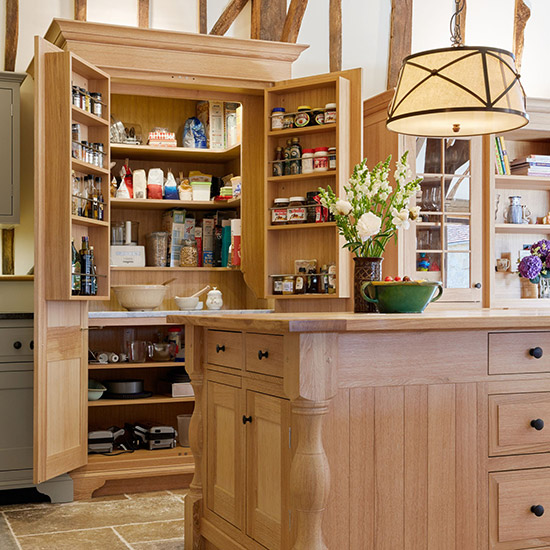How to commission a bespoke kitchen
A truly bespoke kitchen will make the most of the architectural space available

It's not easy to know where to start when commissioning a bespoke kitchen, so we've asked the experts to offer some simple guidance...

Above: A kichen designed by Ian Adam-Smith with cabinetry by Halstock
From Richard Moore, Design Director, Martin Moore & Company:
1. Get a personal recommendation - nothing is better than hearing about the company through word of mouth.
Ask family and friends for their experiences and speak to companies who provide a bespoke service in your area.
2. Take your wish list of appliances and any inspirations you have; from a snapshot of a friend's kitchen to pages you've cut out of magazines. You may not know exactly what you want, but it is a great starting point for discussion. If you have a floorplan of the room then that will be helpful too.
From
Get the Ideal Home Newsletter
Sign up to our newsletter for style and decor inspiration, house makeovers, project advice and more.
Karan Main, Director at The Main Company:
3. Choose the granite colour before the paint colour, it's a much easier way around in the long run.
4. Take samples home to look at them in the light of the room, try to hold them the way they will really be, so the granite would be horizontal and the unit sample colour board be vertical, try to have your flooring sample on site at the same time if possible.
5. Consider running down into a fitted settee or window pew at the end of a run if space allows to create an alternative social area to a breakfast bar.
From Kiran Noonan, Marketing Director at John Lewis of Hungerford:
6. Look at painting cabinetry or walls in a unique colour. Painted kitchens endure as a really popular option because they are so versatile. They can be adapted to suit pretty much any space, taste or style and are very easy to live with.
From Paul Walton, Senior Designer at Halstock
7. Involve your designer/cabinet maker from the word go - If using an interior designer, architect or builder, put your designer/cabinet maker in touch with them straightaway. It will avoid rethinks, saving time and money.
8. Create a practical layout - In large kitchens group the main sink, bins, crockery and cutlery in one zone, while the fridge, dry food storage, hob, ovens, pans and utensils should be located in the 'prep area', but don't have the main sink too far from the hob. Consider what pantries and utility rooms will be used for.
9. Build in appliances - Don't compromise on the quality of your appliances and keep worktops clear by creating a space for everything from food processors to bread makers. Work out where any 'extras', such as a chill blaster, vacuum sealer, boiling water tap, wine fridge or a second dishwasher, will go.
10. Allow six months - It is a mistake to rush the planning process which often takes longer than creating and installing a kitchen. But for a quick result, everyone involved needs to sign up to a fixed timeline.

Thea Babington-Stitt is the Managing Editor for Ideal Home. Thea has been working across some of the UK’s leading interiors titles since 2016.
She started working on these magazines and websites after graduating from City University London with a Masters in Magazine Journalism. Before moving to Ideal Home, Thea was News and Features Editor at Homes & Gardens, LivingEtc and Country Homes & Interiors. In addition to her role at Ideal Home, Thea is studying for a diploma in interior design with The Interior Design Institute.
-
 Will a conservatory add value to your home and how can you maximise it?
Will a conservatory add value to your home and how can you maximise it?This is what the pros say
By Amy Reeves
-
 I’ve been looking for a new signature scent for my home and The White Company's new fragrance is the exact summer holiday smell I needed
I’ve been looking for a new signature scent for my home and The White Company's new fragrance is the exact summer holiday smell I neededSantorini smells fresh, summery and sophisticated
By Kezia Reynolds
-
 How to remove algae from garden walls in five steps – and the cleaning product experts rave about for tackling it fast
How to remove algae from garden walls in five steps – and the cleaning product experts rave about for tackling it fastExperts share their top tips for getting garden walls algae-free
By Katie Sims